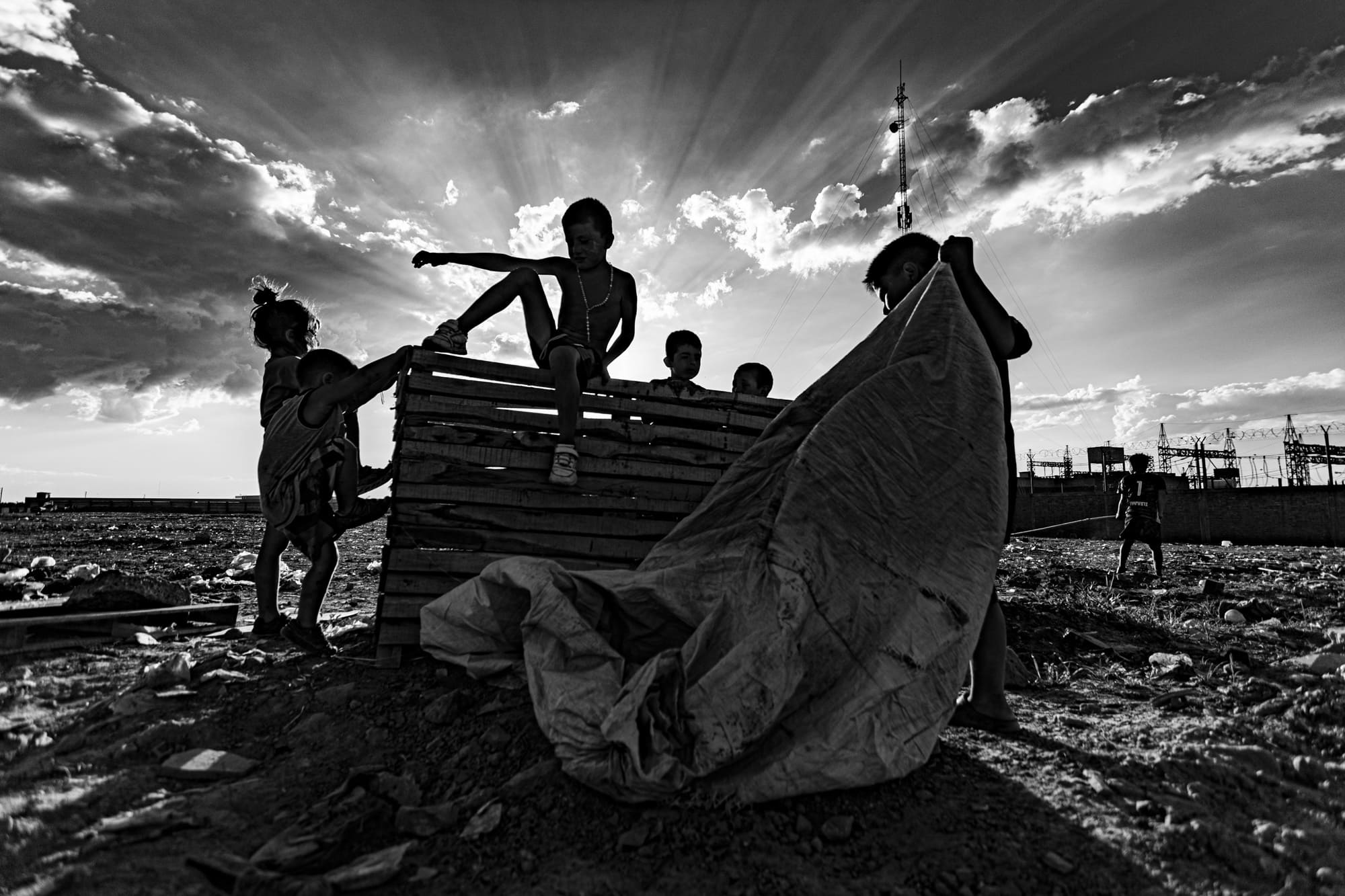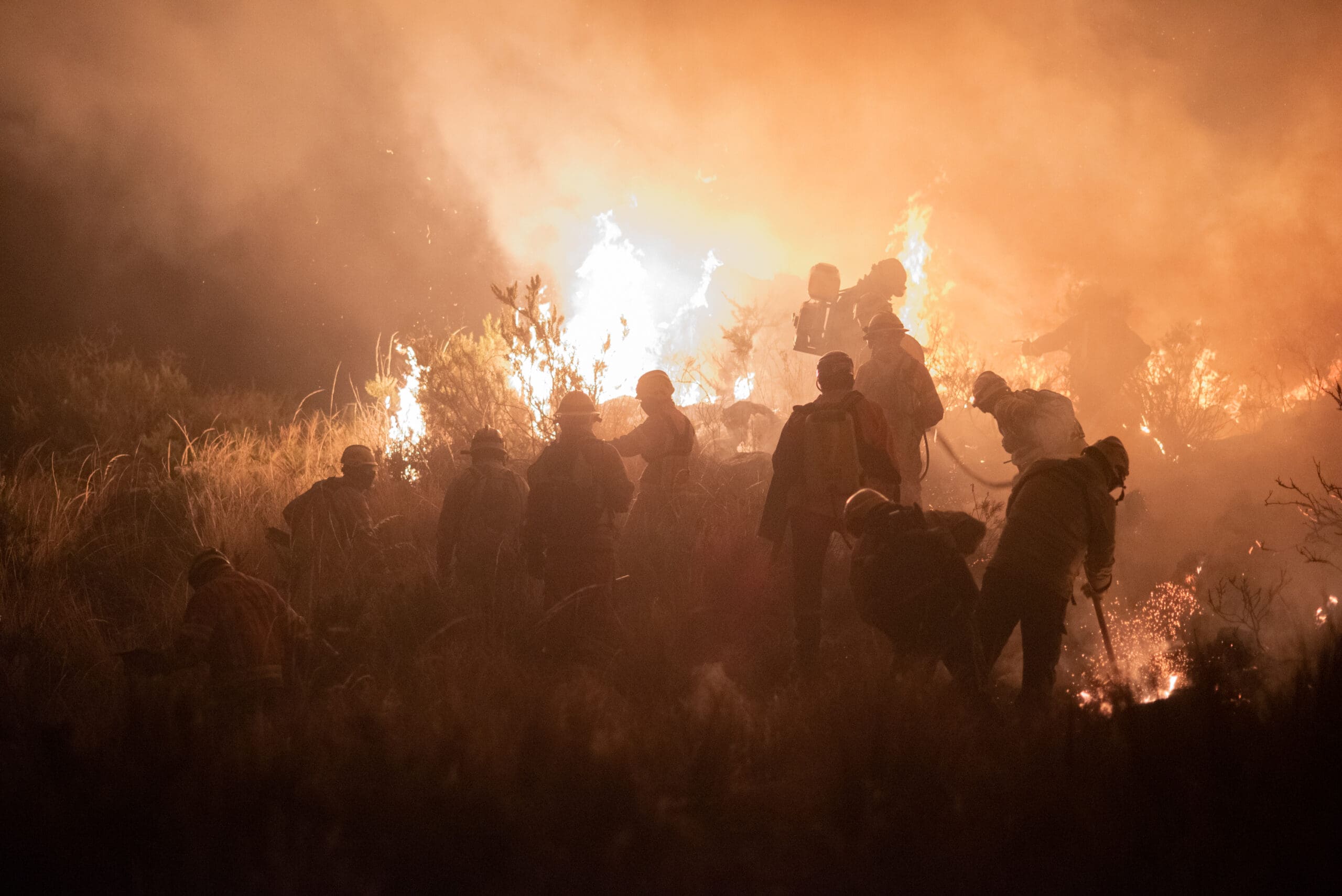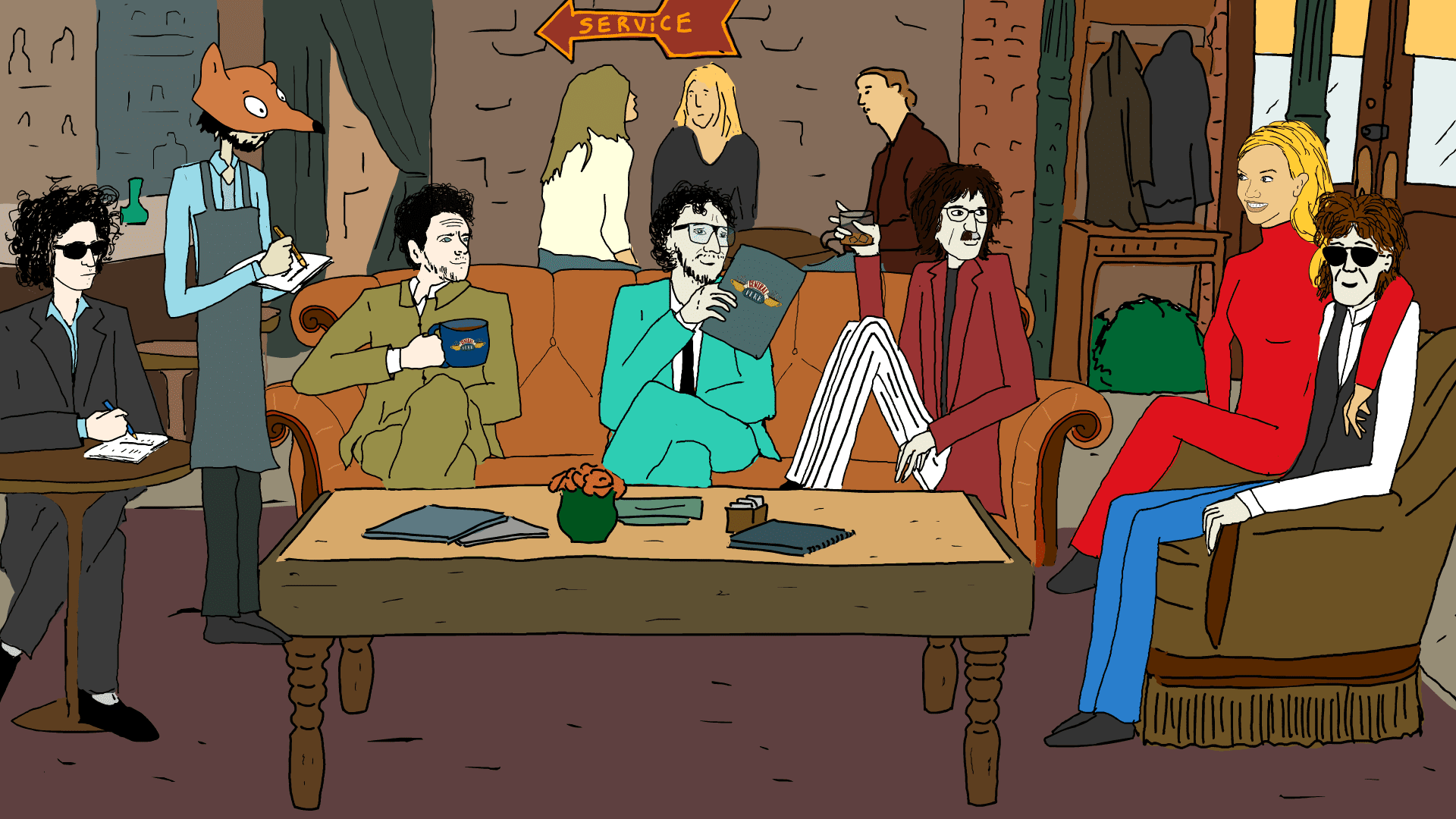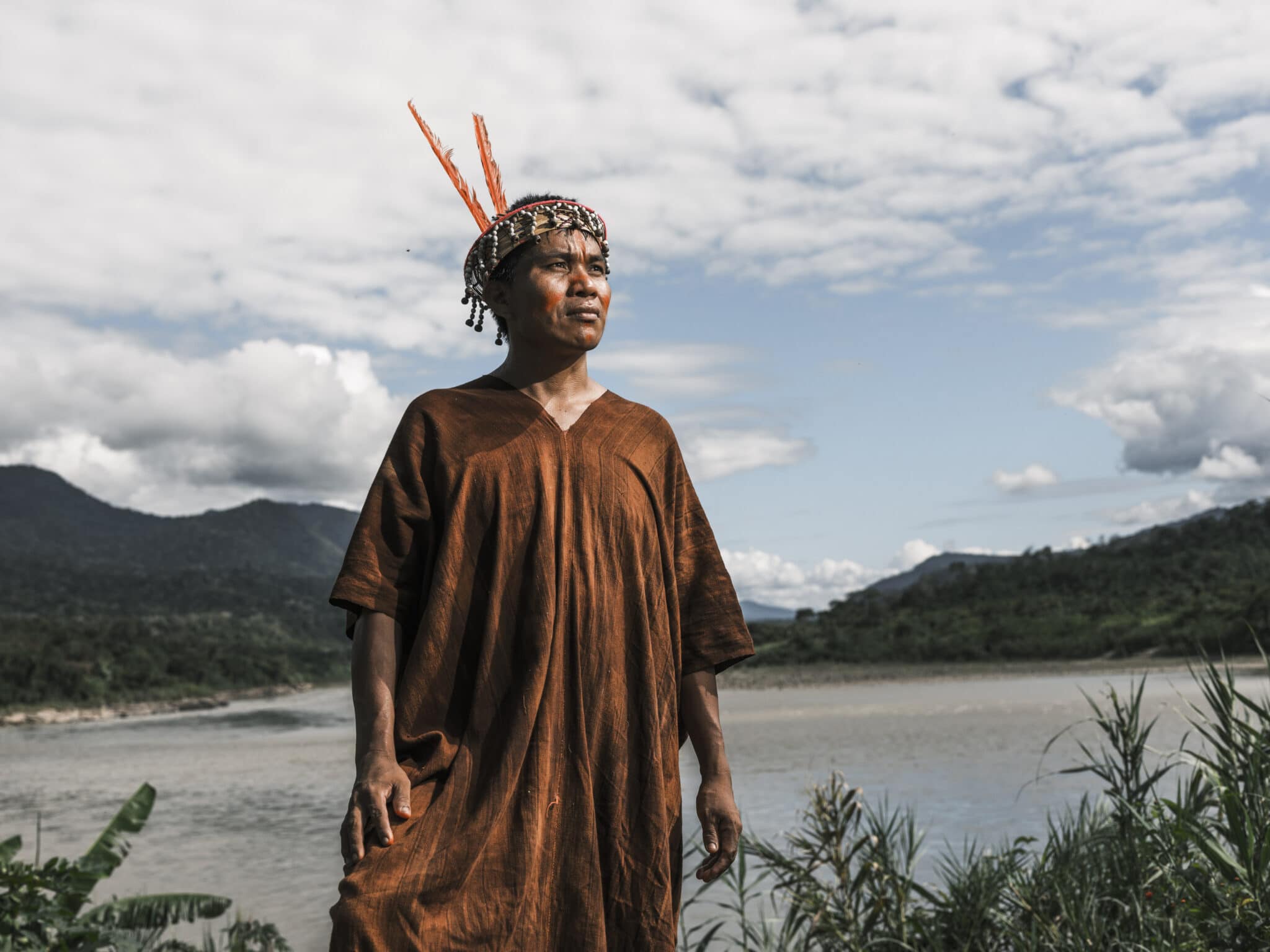
The war of the Ovayerii is still ongoing
The Ashaninka – the most prominent indigenous nation in the Peruvian Amazon – have been organizing for generations to defend their territory. They call themselves Ovayerii: warriors. In the years of the war against the Shining Path, these groups – recognized by law as Self-Defense Committees – defeated terrorism in the Vraem jungle. Today, despite the indifference of the State, the “Asháninka army” resists drug trafficking, illegal loggers, and land invaders. For them, peace remains under threat.
By Joseph Zárate
They called him Bendito
He was a tall, sturdy young man, pastor of a small evangelical church, whose words were so energetic and seductive that he could convert dozens of Asháninkas like him into Christians. But in the native community of Potsoteni, where he was born and raised like his ancestors, Bendito failed to convince the Shining Path militants to exchange the path of arms for forgiveness. For the terrorists – many of them teachers or farmers who were also Ashaninka – the only way to abandon that life of poverty, that “historical abandonment” by the Peruvian State, was to take power through “people’s war.”
Anyone who opposed this project was an enemy and had to be exterminated, beheaded, hanged, or stoned. They had to die from a bullet in their head.
Bendito saw how the Potsoteni authorities were murdered and how families agreed to join the ranks of the Party out of fear. Then one night in mid-1990, when the terrorist commanders got drunk at a party, the young pastor, his two wives, his young children, and a group of 30 families took the opportunity to fly in the darkest hour of the night. They sailed down the mighty Ene River in canoes, eight hours downstream, without stopping, until they reached Poyeni, another community in the Tambo River basin, out of the Shining Path’s reach. From that day on, that 25-year-old shepherd – still called Alejandro Pedro Chubiante – changed his name to the one that all Ashaninka people remember him by today. He wanted to protect his family, although it did him little good: a couple of years later, in an ambush, while he was harvesting cassava, terrorists stoned him to death.
“I will never forget that story, but I don’t victimize myself because my father died,” says Ángel Pedro Valerio, Bendito’s youngest son, then a baby hugging his mother’s skirt, on the night of the escape. “We Asháninkas remember so that this tragedy will never happen again.
Self-Defense Committee of the Puerto Asháninka Union Community, Río Ene. / Musuk Nolte
Although his images of his father are too blurry, Angel Pedro says he has preserved his legacy. In a few months, he will be the age of Jesus Christ. At the same time, Angel will be in his sixth year as president of the Central Asháninka del Río Ene (CARE). Ashánika people created CARE in 1993 to organize this indigenous nation – the largest in the Peruvian jungle – to repopulate the lands taken over by terrorism at the end of the 20th century.
The Asháninka people were the Amazonian nation most punished by the war between the Armed Forces and the Shining Path, according to the final report of the Truth and Reconciliation Commission of Peru: more than 30 communities disappeared, some 10,000 indigenous people were displaced, 5,000 kidnapped and 6,000 murdered, close to 10 percent of the total number of deaths recorded.
The first Shining Path members arrived in Ene river in the mid-1980s, together with groups of colonists dedicated to coca leaf cultivation, which had settled on the left bank of the river. Their purpose was to control the central jungle after confronting the military in Ayacucho, in the country’s southern highlands. The terrorists looted farms and burned medical posts and municipal offices. They set up forced labor camps in the thick forest where they held hundreds of Ashaninka captive for months. They forced them to work the land, cook for the terrorist commanders, to abandon their language to speak Quechua or Spanish. They stabbed or hanged the rebels in front of their families. They raped women. They kidnapped children between 10 and 15 to brainwash them and turn them into combatants.
Asháninka woman with a machete in the Kimaropitari community; the machete is one of the main tools in the Chacras (small farm) to cut through the undergrowth, and peel fish, among other uses./Musuk Nolte.
Around the same time, cocaine trafficking boomed in the Ene Valley. The local economy changed rapidly and stimulated land appropriation. Until then, peaceful airstrips of religious missions became very active. And Colombians appeared; they asked the Ashaninka to abandon cocoa for the more lucrative coca. Some agreed others did not.
Hundreds of Ashaninka, like Bendito and the families of Potsoteni, fled into the bush or down the river. Albeit at a high cost. Some people had to leave their weaker or smaller family members behind. They feared being found by the annihilation commandos. The community leaders, however, knew they could not keep running forever.
“We have concrete houses, but there is no drinking water or sewage or internet for our children to study,” says Angel Pedro, an Asháninka leader. “We have some shotguns that they gave us to defend ourselves from Sendero, but now they are obsolete. If it weren’t for our organization, for our strength, they would have disappeared us by now.”
Members of the Osherato self-defense committee patrol the community. A few months ago they caught a boat transporting drugs, a common occurrence in the Ene River basin. / Musuk Nolte
Flight, combat, return.
Unlike other Amazonian peoples who conquer territories, the Ashaninka are defensive warriors: when they are attacked, when their lands are invaded, they have the reputation of being the fiercest warriors – the best with bow and arrow – of the 51 Amazonian nations that exist in Peru. Hence, after Shining Path’s initial coup in the Ene Valley, the Ashaninka people organized themselves without waiting for help from the Peruvian state.
For generations, the Ashaninka have formed groups specialized in protecting themselves from threats. They call them Ovayerii: warriors. In his book Rondas Campesinas y Nativas de la Amazonía Peruana, anthropologist Óscar Espinosa explains that these groups constitute a traditional practice to which the Asháninka have been forced to resort at different times in history, when they have had to defend their lands or their lives. Asháninka people reactivated this tradition in the face of terrorist violence.
In the early 1990s, when the war against Shining Path was at its bloodiest; the Ashaninka of the Ene and Tambo river valleys organized themselves into the Ashaninka army: a battalion of indigenous warriors armed with shotguns, bows, and arrows that made surprise assaults on the Shining Path camps. To assaults them, the native rounders appealed to the warrior tradition of their grandfathers.
Masato is a drink made from yucca fermented with saliva and sweet potato. Its consumption is vital in social relations and is a food source for several Amazonian peoples, such as the Ashaninka. / Musuk Nolte.
Carin Bendita Bardales lives in the community of Kempiri with her family after spending some time in a Noshiro. / Musuk Nolte
Thus, all the adult males formed the “self-defense committees” or CADs, legalized in 1991 during Alberto Fujimori’s regime. “It is thanks to us that the military has won,” says Américo Salcedo, 35, president of the self-defense committee of the Ene valley, which covers some 56 communities with their annexes, from Osherato to Catungo-Qempiri. Shining Path murdered his father, and his body was thrown into the river. “Fujimori has not wanted to confront one hundred percent. The military has given our brothers weapons so they can only fight as cannon fodder. To go and die. And that is also part of the truth.”
By 1994, the Ene communities, like those of Potsoteni, decided to reconquer their territories in coordination with the Armed Forces. Potsoteni (“red river” in the Ashaninka language) was one of the first communities to return to the valley.
“We ambushed the Terrucos. Little by little, we opened a farm to live in this territory again,” says Toribio Valerio, a former Asháninka leader who organized the return of his community after his uncle Bendito was murdered by Shining Path. Today, more than 30 years later, from the tranquility of his old age, Toribio lives with his wife, four grown-up children, and many grandchildren, integrated into this community of more than 500 families in a territory that exceeds 10,000 soccer fields combined.
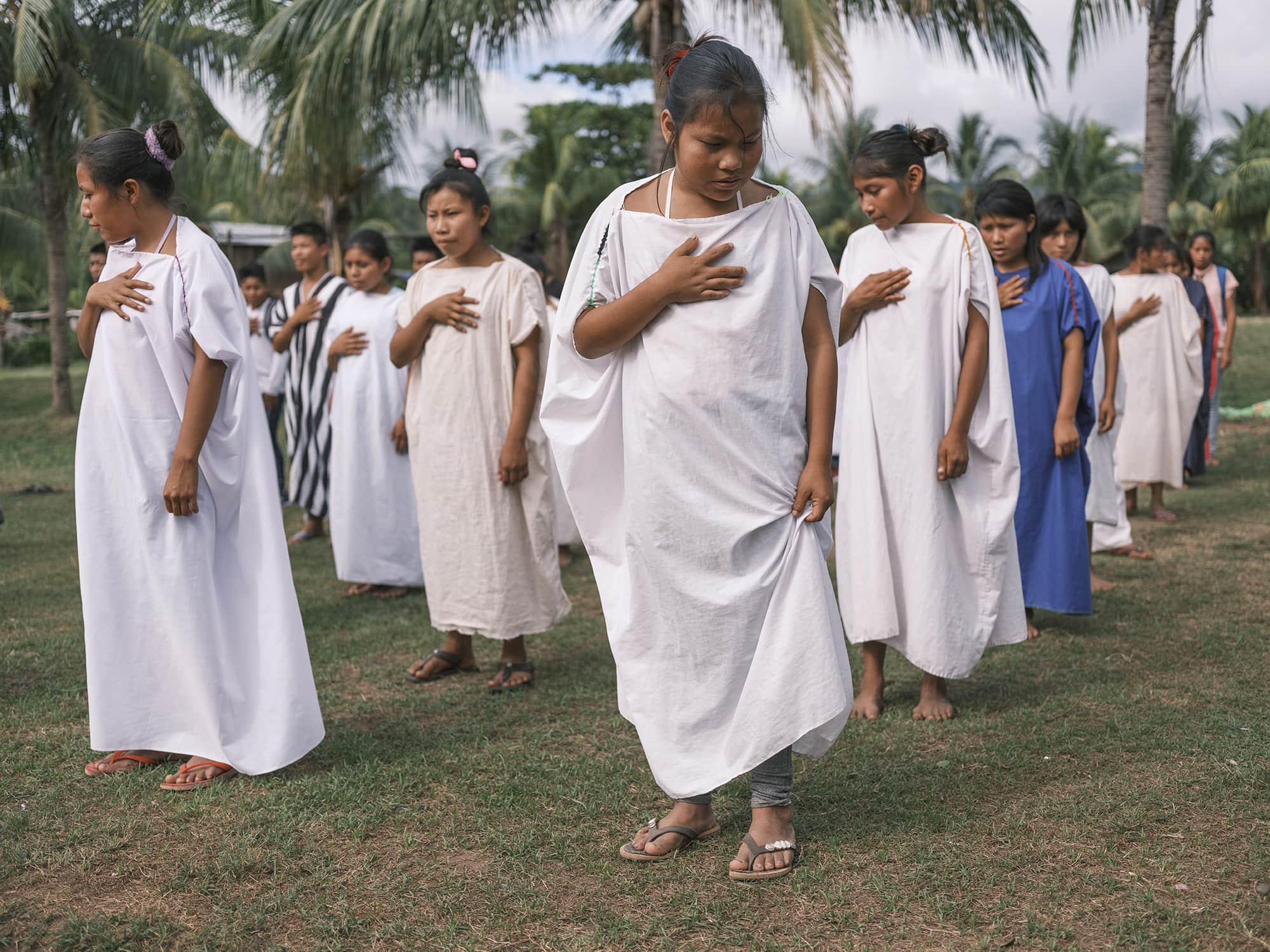
Girls prepare for a Mother’s Day performance in the community of Potsoteni, Rio Jan. / Musuk Nolte
Haroldo Ventura, chief of Unión Puerto Asháninka, points to an old community map. / Musuk Nolte
This sunny Saturday in May, Potsoteni prepares to celebrate Mother’s Day and the anniversary of the community. The sun, with its yellow harpoons, burns the necks. The clouds rest on the green mountains like giant cotton animals. Angel Pedro is right now in the middle of his work with other community members, also members of the self-defense committee, cutting with machetes the weeds that have been accumulating at the village entrance. They need the road cleaned so they can pass some sheets of technopop and calamine that they will use to build concrete houses for a state social program next to the wooden cabins.
“We have concrete houses, but there is no drinking water, sewage, or internet for our children to study. We have some shotguns given to us during the Shining Path era to defend ourselves, but now they are no longer useful. They are obsolete,” says CARE’s president. “If it weren’t for our organization, for our strength, they would have disappeared us by now.”
An Asháninka woman practices Shimpokantantantsiro, healing through the steam of plants: placed in a container with water, they raise steam on contact with incandescent stones. The patient standing on the vessel receives the smoke inside a Kushma. At the same time, the steamer and the patient should rub the painful parts to expel the damage from his body. / Musuk Nolte
“Here there is not one hundred percent peace,” says Aroldo Ventura, 47 years old, president of the Unión Puerto Asháninka community, located in the lower Ene Valley, where some 500 families live. This morning Aroldo gives orders and dismisses a troop of young men, members of the self-defense committee. With their brown cushmas, faces painted with achiote, and a pair of hunting shotguns, spears, and arrows, they walk through the bush patrolling the community’s territory. The committees are made up, for the most part, of men over 18 years of age in each community. Without exception. Almost like compulsory military service. Today, following the tradition of their fathers and grandfathers, they continue to guard their territory. Although they no longer face the terror deployed by Shining Path, they know that there are still dangers they must face.
The self-defense committees have evolved in their functions: they are now in charge of maintaining internal order in the Ashaninka villages. They intervene in disputes between neighbors (cases of rape, robbery, and family violence). Watch over the entry of outsiders (invasion of settlers, generally, or the passage of “backpackers” or traffickers crossing the river in boats). Stop the advance of forest fires (using drones), and resist the pressures of coca leaf drug traffickers (where money, sometimes, tends to break wills).
“The coca growers of the Vraem, seeing that there is no more land to cultivate, invade our territories, cut down the trees and plant their coca,” says Américo Salcedo, president of the Self-Defense Committees. “But then, with so many chemicals, the land is no longer good for anything. Then they invade more indigenous territory, so it’s like a circle that never ends.”
“The coca growers of the Vraem, seeing no more land to cultivate, invade our territories, cut down the trees and plant their coca. And there you can have two or three harvests, but then with so many chemicals, the land is no longer good for anything, with no nutrients. Then they go out to invade more indigenous territory, and it’s like a circle that never ends,” explains Américo Salcedo, president of the Committees, who knows firsthand how these mafias operate. “I have seen it. No one has told me. But the Peruvian state authorities don’t seem to think so.”
In a document sent to CARE in 2021, the Armed Forces stationed in the Ene River valley prioritize the protection of the highlands, closer to the Vraem jungle, where there is a higher level of action by drug trafficking groups and their allies, the terrorist remnants. However, the danger is far from over for Asháninka communities in that part of the valley – such as Osherato, Unión Puerto Asháninka, and Potsoteni.
Agustin Rojas is the chief of Osherato, one of the first communities in the northern part of the Ene River. In recent months, this and other communities have strengthened their self-defense committees in the face of increasing conflicts with invaders, timber traffickers and drug traffickers. / Musuk Nolte
“Today, the military in the area says that the committees should be deactivated because they don’t have an updated registry or updated resolution. But the law does not say that,” explains Irupé Cañari, CARE’s legal advisor, adding that several communities could not meet these requirements because of the isolation they had to abide by due to the pandemic. “In addition, they had no internet to send their reports and no fuel to navigate upriver for eight hours to the nearest military base. It was hard work to make the Armed Forces understand that. The self-defense committees continue to exist legally as long as there is a state of emergency in that area. Only when the State of emergency is changed to a State of law, when there are no longer hostile groups, the self-defense committees are deactivated. That is what the decree says.
It was only in the middle of 2021, in the context of the massacre of the Vizcatán del Ene community, with the multiple murder of some community members – allegedly perpetrated by remnants of Shining Path, although the case is still under investigation – that the Armed Forces decided to stop the deactivation of the Ashaninka self-defense committees. Today, the entire Vraem area remains in a state of emergency. And the Ashaninka leaders are in danger.
Elio Sebastián (16) and Karen Ríos (15) are married. They received a small lot in the Boca Anapate community where they will build their house. / Musuk Nolte
Global Witness indicates that Peru is among the ten most dangerous areas for land and water defenders. And Ashaninka leaders, as was the case during the time of the subversion, continue to be among the most attacked and criminalized. In 2013, for example, two assassins killed Mauro Pío – historical leader of the Asháninka people – by shooting him from their motorcycles. Pío had been demanding for twenty years the titling of his land and the expulsion of the forestry company invading his community. In 2014, timber traffickers shot and killed Asháninka leader Edwin Chota and his three companions in the jungle on the Brazilian border. For 12 years, he had been demanding that the State help him protect his forest from depredation. Only after his death did the authorities heed his demands. More than 80 Peruvians (primarily indigenous) were killed for similar reasons during the first two decades of this century. The figure only records known cases.
“The greatest danger we feel is that the State, who is supposed to defend us, betrays us,” Ruth Buendía, a renowned Asháninka leader and winner of the Goldman Prize, the Green Nobel, awarded to environmental leaders on five continents, once told me. She confronted the Brazilian company Odebrecht to prevent the construction of a dam on indigenous lands. “They leave us to our fate at the hands of criminals.”
New leadership
The new generations of Asháninka, young people in their 20s and 30s, children and grandchildren of the leaders who were exterminated or banished during the war against Shining Path, are clear that they cannot remain with their hands outstretched, waiting for the State to come to their aid.
“We have already waited too long,” says Florinda Yumiquiri, 28, mother of two children and a baby due in a few weeks. Standing under the shade of a tree, the secretary of the Osherato (“crab”) community and treasurer of CARE says that is why women are now also part of the self-defense committees.
“Times have changed. Now I can’t, but the younger women also go out on patrol to whip those who come to invade our territory,” says Florinda, referring to the Asháninka custom of whipping a “bad guy” with nettle branches, long like whips. Thus, she says, a few years ago, they managed to expel a group of settlers (“Choris”) who wanted to appropriate a sector of the community’s forest. Only after a trial that lasted almost a decade were they able to end this problem by obtaining their land title in 2018. This is not the only case.
Kirenia is 15 years old and already the mother of an almost one-year-old boy. When she became pregnant by her partner, she dropped out of school and dedicated herself to raising her child. In the Asháninka communities, sexual life begins in adolescence, although in recent years more young people are seeking to postpone motherhood after completing their studies. / Musuk Nollte
Although they have inhabited their territories for generations, more than 600 indigenous communities – half of all those in the Peruvian jungle – are still not the legal owners of their lands. A World Resources Institute study in fifteen countries in Asia, Africa, and Latin America, shows that legalizing an indigenous territory is highly complex, costly, and slow. Families often abandon their land or lose their water, medicinal plants, or food rights. While communities face processes that can take more than 30 years, companies applying for concessions on these same lands usually obtain them in only 30 days, or at most five years. Indigenous peoples and rural communities occupy more than half of the world’s land but legally own only 10 percent of the world’s land.
Peru is among the ten most dangerous areas for land and water defenders. And Asháninka leaders, as was the case during the war against Shining Path, continue to be the most targeted and criminalized. In 2014, timber traffickers murdered leader Edwin Chota on the border with Brazil. For 12 years, he had been demanding that the state help him protect his forest from depredation.
In the Ene Valley, one of the communities that have suffered the most from the destruction of its territory at the hands of coca growers is Catungo Quempiri, located in the district of Río Tambo in the province of Satipo, in Junín. This community borders the Cusco region and, since 2018, began to denounce the presence of invading settlers to plant coca leaves. According to CARE’s legal advisor, ten complaints for illegally logging Catungo Quempiri forests have been registered with the Specialized Environmental Prosecutor’s Office. As of December 2021, 1,962 hectares have been deforested by the advance of coca cultivation and other illegal activities in this area.
Clementina Shinquireri, the first chief of Catungo Quempiri, heads this community. Her father, who was the founder of the community she now leads and who actively participated in obtaining the land title in 1999, was assassinated by the Shining Path. Now, she, too, is threatened by terrorist remnants.
Florinda Yomiquiri, secretary of CARE. Potsoteni, Ene river. / Musuk Nolte
Although they have inhabited their territories for generations, more than 600 indigenous communities – half of all those in the Peruvian jungle – are still not the legal owners of their lands. A World Resources Institute study in fifteen countries in Asia, Africa, and Latin America, shows that legalizing an indigenous territory is extremely complex, costly, and slow. Families often abandon their land or lose their water, medicinal plants, or food rights. While communities face processes that can take more than 30 years, companies applying for concessions on these same lands usually obtain them in only 30 days, or at most five years. Indigenous peoples and rural communities occupy more than half of the world’s land but legally own only 10 percent of the world’s land.
Peru is among the ten most dangerous areas for land and water defenders. And Asháninka leaders, as was the case during the war against Shining Path, continue to be the most targeted and criminalized. In 2014, timber traffickers murdered leader Edwin Chota on the border with Brazil. For 12 years, he had been demanding that the state help him protect his forest from depredation.
In the Ene Valley, one of the communities that have suffered the most from the destruction of its territory at the hands of coca growers is Catungo Quempiri, located in the district of Río Tambo in the province of Satipo, in Junín. This community borders the Cusco region and, since 2018, began to denounce the presence of invading settlers to plant coca leaves. According to CARE’s legal advisor, ten complaints for illegally logging Catungo Quempiri forests have been registered with the Specialized Environmental Prosecutor’s Office. As of December 2021, 1,962 hectares have been deforested due to the advance of coca cultivation and other illegal activities in this area.
This community is headed by Clementina Shinquireri, the first chief of Catungo Quempiri. Her father, who was the founder of the community she now leads and who actively participated in obtaining the land title in 1999, was assassinated by the Shining Path. Now, she, too, is threatened by terrorist remnants.
Hence, for Angel Pedro, president of CARE, the self-defense committees constitute the first line of defense against a sluggish State. “When there is an emergency, the military takes a month or two months to arrive. On the other hand, here, as community members, we are the ones who rise quickly to defend our territory”.
On April 20 of this year, the murder of Ulises Rumiche Quintimari, who was found dead on the Naylamp road in Sonomoro, was a reminder of the vulnerability in which these communities remain. The Nomatsiguenga indigenous leader and manager of Indigenous Peoples in the district municipality of Pangoa (province of Satipo, to which the Ashaninka lands of the Ene belong) was shot in the head and killed. So far, there is no progress in the investigation, according to the relatives.
Also, the Government’s response has not been the most adequate. Last Thursday, May 26, a decentralized session of ministers was to be held in Satipo; however, the Government canceled it. CARE rejected the postponement of this meeting in which they hoped to expose the insecurity in which their communities live.
“We already have it clear: this is already installed in the organization of the native communities,” says Angel Pedro, who once wanted to be a policeman to avenge the death of his father, Pastor Bendito. “So no matter how much they want to deactivate us and take away their State weapons that are already obsolete, we will continue, even with our bows and arrows, we will defend ourselves.”
*This report was made with the support of the National Geographic Society and was initially published in NatGeo en Español in September 2022.
